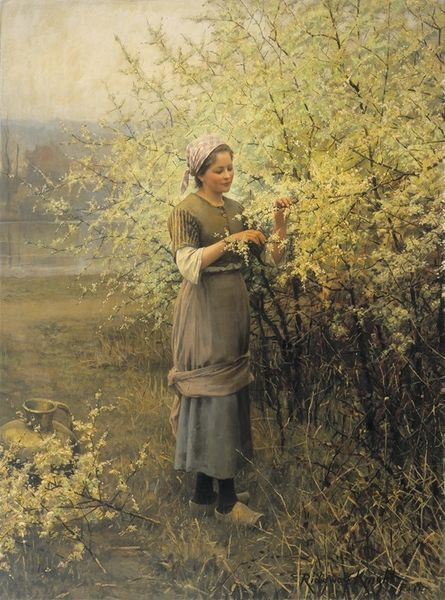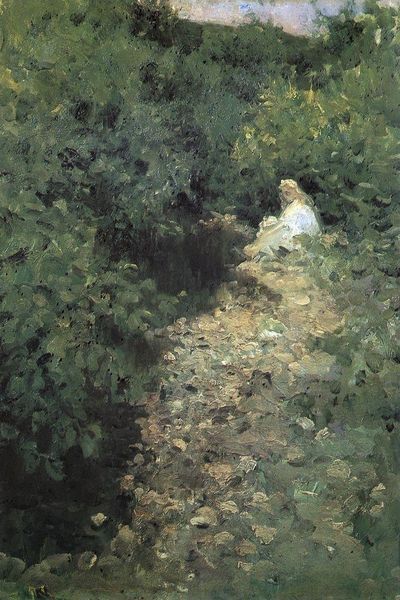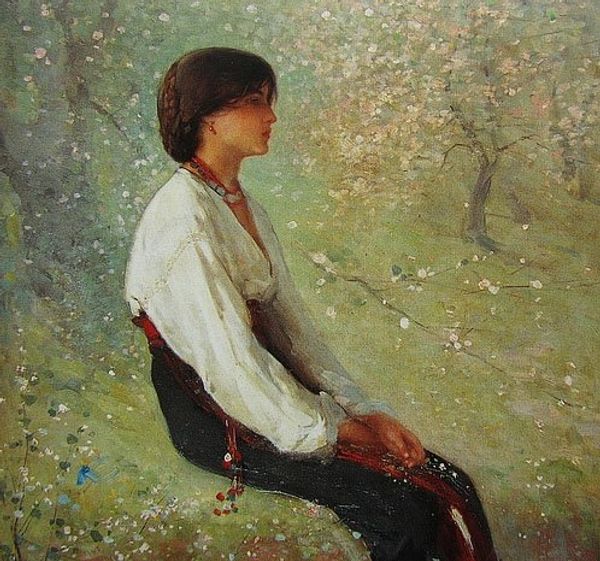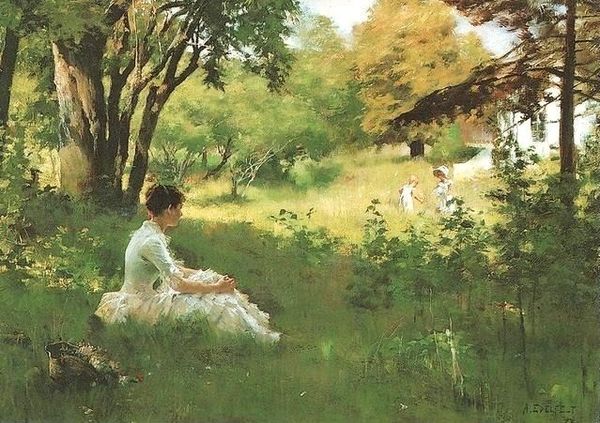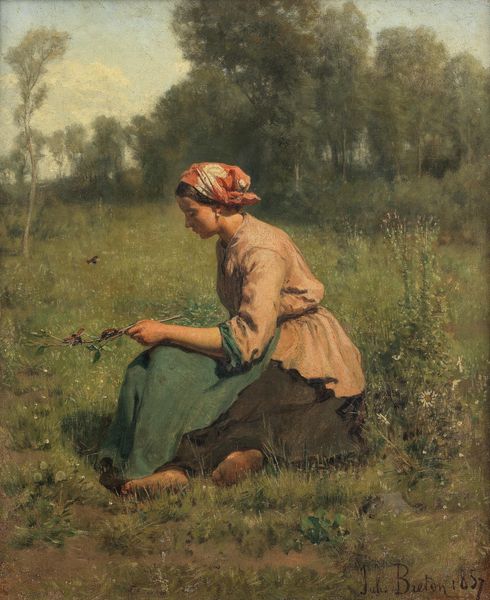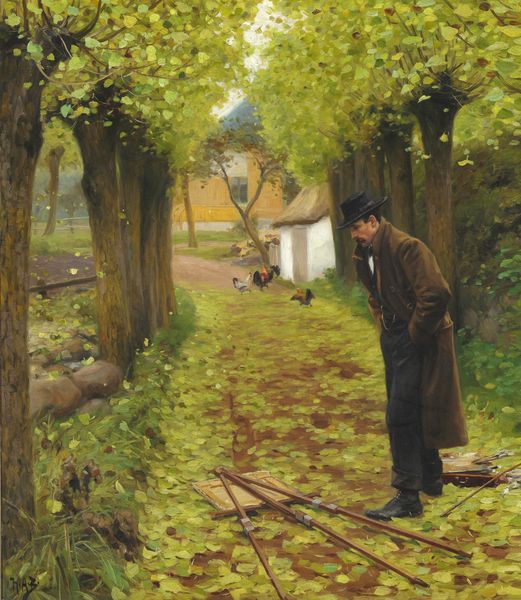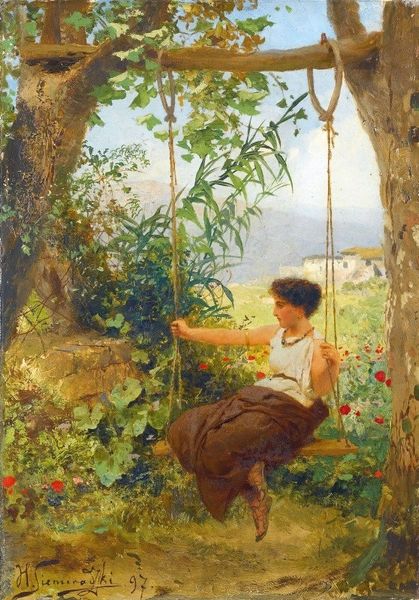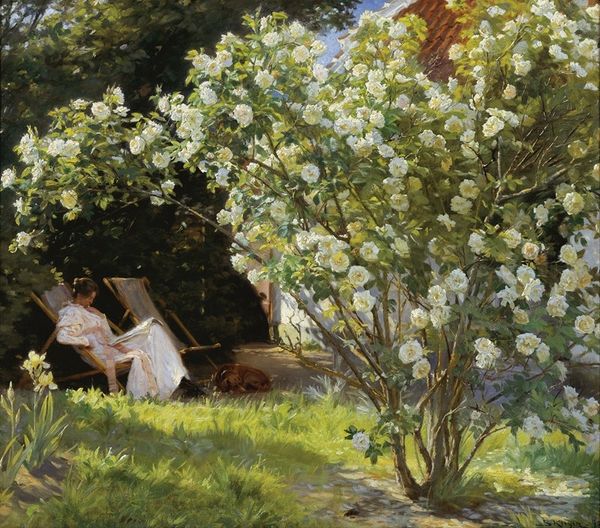
Copyright: Public domain
Editor: Marie Bashkirtseff's "Spring," painted in 1884, depicts a young woman resting beneath a blossoming tree. It's so serene, but something about her posture suggests pensiveness. What do you see in this piece? Curator: I'm struck by how Bashkirtseff uses the symbolism of spring itself. Consider spring's historical associations with rebirth, renewal, and feminine energy. It’s all right here. Do you notice how the white blossoms create a halo-like effect above her? It creates a layered symbol system. Editor: That's interesting! I hadn’t thought of the blossoms that way, more that they set the mood. Curator: Yes, it creates a mood, but also alludes to the ephemerality of beauty and youth. The young woman appears almost burdened. Perhaps she represents the weight of potential, the anticipation that is so ripe with possibilities that it feels almost too much to carry. What might this say about 19th-century ideals surrounding young women? Editor: That idea about the burden of potential makes sense. Maybe Bashkirtseff is contrasting society's expectations with the woman’s individual desires. It's a beautiful, thought-provoking contradiction. Curator: Precisely. The path she sits beside, where does it lead? Could it symbolize opportunities taken or not? What choices did women have back then? Visual culture reinforces power structures and Bashkirtseff highlights this duality in a moving way. Editor: I see that now. There's so much depth in what initially appeared to be a simple scene. Curator: And that is why reading images with their historical language matters! We uncover their memory.
Comments
No comments
Be the first to comment and join the conversation on the ultimate creative platform.

